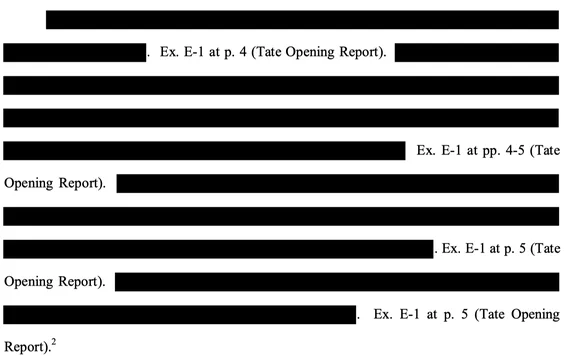
Whew, this is another one that falls in the "I'm glad I'm not involved in that" bucket (some previous entries here and here).
On Friday, Judge Andrews rejected a frivolous motion to seal, after he found some of the supposedly-sensitive information as a top result on Google:
This is about as frivolous a motion to seal as I have seen. Defendants submitted a declaration of Phil Harnish in support of their motion to transfer the case to the Northern District of California. The motion is based on the purported need to avoid disclosing “sensitive personal information about employees that, if revealed, would harm those employees,” and “commercially sensitive information that, if revealed, would aid Defendants’ competitors and harm Defendants.” (Id. at 2).
The sensitive personal information seems to be that Mr. Harnish works at [defendant] YouTube’s headquarters in San Bruno, California. There is a second employee whose name (Ben Hulse) and office location (also San Bruno) are both redacted, as though he were a confidential source for the CIA. I put “Phil Harnish” into the Google search engine; the first thing that comes up is his “Linked In” page, which has a picture, the job title of Senior Staff UX Engineer, and a link to his personal website and his personal email address. I put “Ben Hulse” into the Google search engine. It’s a more common name than I would have guessed, but when I added “YouTube,” up came his Linked In page, with his job description – Senior Staff Software Engineer – but no picture. There are no social security numbers, bank accounts, home addresses, or anything similar in the Harnish declaration. If the sensitive personal information is by whom they are employed, where they work, and the nature of their work, the Linked In pages seem to refute that as being sensitive.
The commercially sensitive information is which teams Mr. Harnish and Mr. Hulse lead, the size of the teams, and which products the teams work on. I am certainly unpersuaded by an unsworn motion that revealing this information is likely to work a defined and concrete harm to [defendants] Google or YouTube.
The Court doesn't quite call it out, but one of the moving parties here is Google itself. In other words, Google publicly indexed its own purportedly confidential information in its own search engine.
The Court went so far as to order the parties to identify the attorney responsible and for them to explain themselves—and suggested that further proceedings may be required:
Defendants are ORDERED to identify the lawyer responsible for this motion. The lawyer, by January 3, 2023, is ORDERED to submit an explanation of why the lawyer thought this was a justified motion. When I see the explanation, I will consider whether subsequent proceedings are appropriate.
Ouch.
Why Did They File a Motion to Seal at All?
It's not clear to me why the defendants here filed a motion to seal at all. Parties in D. Del. regularly file motions to transfer and accompanying declarations under seal without a motion, including in the absence of a protective order. The defendants' motion doesn't say why they felt they needed to move in this instance.
Motion or not, sealed and redacted filings are subject to the Third Circuit's standards for what may and may not remain sealed (standards that parties sometimes have trouble adhering to, as our judges have pointed out). But, obviously, the motion is what called the Court's attention to this attempt to seal in the first place.
But, as always, if I'm missing something here, please feel free to let me know and I'll update the post.
If you enjoyed this post, consider subscribing to receive free e-mail updates about new posts.


